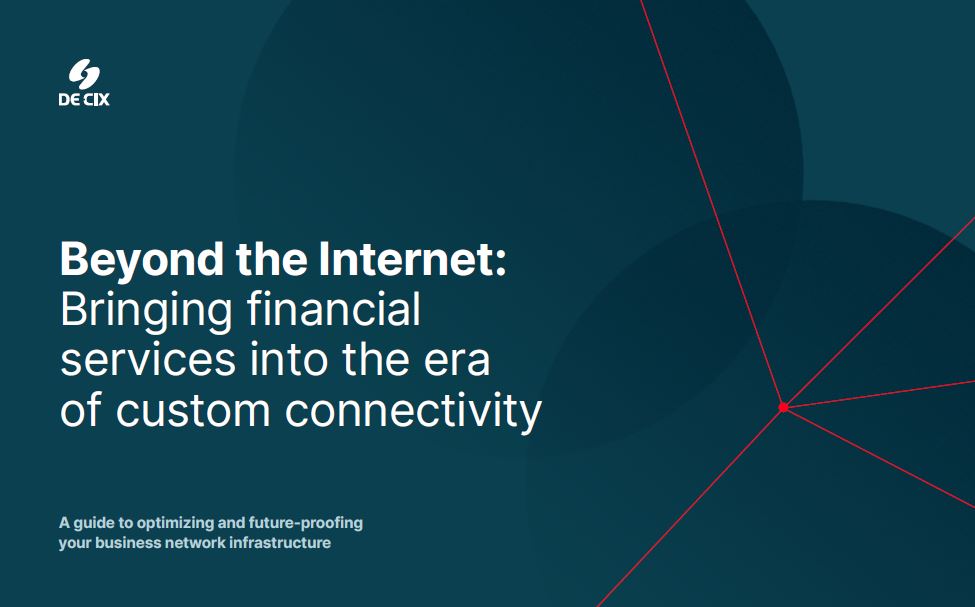Redundancy and stability
03
Future-proof your network: Scaling for tomorrow’s needs
Digital infrastructure is the foundation of almost every aspect of business and personal daily life. Modern networks face unprecedented challenges, from managing massive data flows to mitigating the risks of cyber threats and system failures. A clear strategy – one that balances today's operational needs with tomorrow's opportunities – is essential to ensure that networks are resilient and future-proof.

Now: Strengthening the foundation
The current focus in network design and management is on strengthening regional interconnectivity and reducing vulnerabilities. Robust regional networks ensure that even in view of localized disruptions, broader systems remain functional and responsive. Diverse and redundant paths for inter- and intra-regional communication are essential to ensure seamless connectivity and to minimize the risk of disruption.
Balancing cost and efficiency is a critical factor when selecting Internet Exchange (IXs). Keeping traffic exchange as local as possible reduces latency and improves network performance. Flexible data center selection and bandwidth provisioning also play a key role in ensuring that networks remain adaptable to fluctuating demand.
Traffic distribution is increasingly facilitated by Points of Presence (POPs) within the same network. DE-CIX makes this process more efficient, enabling localized data consumption and improving network stability. By integrating predictive analytics and failover systems, we are building a stable and scalable infrastructure that is prepared for today's challenges.
Balancing cost and efficiency is a critical factor when selecting Internet Exchange (IXs). Keeping traffic exchange as local as possible reduces latency and improves network performance. Flexible data center selection and bandwidth provisioning also play a key role in ensuring that networks remain adaptable to fluctuating demand.
Traffic distribution is increasingly facilitated by Points of Presence (POPs) within the same network. DE-CIX makes this process more efficient, enabling localized data consumption and improving network stability. By integrating predictive analytics and failover systems, we are building a stable and scalable infrastructure that is prepared for today's challenges.


Next: Pioneering the future
As technology evolves, so must our approach to network design. The next wave of innovations will reshape the way we think about connectivity and redundancy.
Building resilient networks
LEO (Low Earth Orbit) satellite constellations are revolutionizing global connectivity, bridging the digital divide in remote or underserved regions. These systems provide critical redundancy to terrestrial networks, ensuring reliable communication even in the event of localized infrastructure failures. The focus is on resilience and back-up capabilities, with LEO networks acting as redundant systems that strengthen overall network reliability.
Space-based Internet systems provide unparalleled stability for global communication, ensuring seamless connectivity for businesses and consumers alike. This new layer of redundancy enhances stability and positions networks to meet the growing demand for global connectivity.
Keeping the wheels turning
Autonomous vehicles are set to transform transport, and their success depends on stable, continuous communication. These vehicles depend heavily on robust AI cloud connectivity, 5G and the coming 6G mobile technology, and LEO satellite constellations to maintain operations. Consistent connectivity between LEO satellites and terrestrial networks ensures uptime and system stability for autonomous systems to operate safely.
The integration of LEO satellites into network architectures is becoming more than a trend – it’s a must. Self-driving cars and other AI-controlled systems are becoming standard. As they require seamless communication, networks are needed that are designed for both redundancy and reliability.
Intelligent traffic management and beyond
In addition to satellite-based progress, intelligent traffic management will redefine network performance by dynamically adapting to fluctuating demands. Quantum networking, still in its early stages, has the potential to deliver unprecedented speeds and security, fundamentally changing the way certain highly critical data is transmitted and protected.
Carbon-conscious infrastructure is also gaining momentum as sustainability is a key consideration. Decentralized architectures, such as edge computing and disaggregated computing, will distribute resources closer to users, increasing speed and reducing latency. Also, global data regulations are driving the need for adaptable networks that meet diverse regulatory requirements while maintaining optimal performance.
Balancing these emerging trends with immediate needs requires forward-thinking strategies. By prioritizing scalability, resilience and innovation, we can build networks that are ready to meet the demands of an evolving digital landscape.
Provocative Consideration: Tomorrow's network won't wait
The race is on to build future-proof networks. The question is not only whether your network can cope with today's demands, but whether it's ready for the unpredictable challenges of tomorrow. From space-based connectivity to autonomous systems and quantum breakthroughs, the stakes are higher than ever.
The truth is harsh: a network that fails to adapt is a network that fails. Organizations need to overcome reactive strategies and embrace bold, innovative solutions that anticipate what's coming next.
Redundancy isn't just about safety nets, it's about competitive advantage. And resiliency isn't just about availability, it's about business survival.
Building resilient networks
LEO (Low Earth Orbit) satellite constellations are revolutionizing global connectivity, bridging the digital divide in remote or underserved regions. These systems provide critical redundancy to terrestrial networks, ensuring reliable communication even in the event of localized infrastructure failures. The focus is on resilience and back-up capabilities, with LEO networks acting as redundant systems that strengthen overall network reliability.
Space-based Internet systems provide unparalleled stability for global communication, ensuring seamless connectivity for businesses and consumers alike. This new layer of redundancy enhances stability and positions networks to meet the growing demand for global connectivity.
Keeping the wheels turning
Autonomous vehicles are set to transform transport, and their success depends on stable, continuous communication. These vehicles depend heavily on robust AI cloud connectivity, 5G and the coming 6G mobile technology, and LEO satellite constellations to maintain operations. Consistent connectivity between LEO satellites and terrestrial networks ensures uptime and system stability for autonomous systems to operate safely.
The integration of LEO satellites into network architectures is becoming more than a trend – it’s a must. Self-driving cars and other AI-controlled systems are becoming standard. As they require seamless communication, networks are needed that are designed for both redundancy and reliability.
Intelligent traffic management and beyond
In addition to satellite-based progress, intelligent traffic management will redefine network performance by dynamically adapting to fluctuating demands. Quantum networking, still in its early stages, has the potential to deliver unprecedented speeds and security, fundamentally changing the way certain highly critical data is transmitted and protected.
Carbon-conscious infrastructure is also gaining momentum as sustainability is a key consideration. Decentralized architectures, such as edge computing and disaggregated computing, will distribute resources closer to users, increasing speed and reducing latency. Also, global data regulations are driving the need for adaptable networks that meet diverse regulatory requirements while maintaining optimal performance.
Balancing these emerging trends with immediate needs requires forward-thinking strategies. By prioritizing scalability, resilience and innovation, we can build networks that are ready to meet the demands of an evolving digital landscape.
Provocative Consideration: Tomorrow's network won't wait
The race is on to build future-proof networks. The question is not only whether your network can cope with today's demands, but whether it's ready for the unpredictable challenges of tomorrow. From space-based connectivity to autonomous systems and quantum breakthroughs, the stakes are higher than ever.
The truth is harsh: a network that fails to adapt is a network that fails. Organizations need to overcome reactive strategies and embrace bold, innovative solutions that anticipate what's coming next.
Redundancy isn't just about safety nets, it's about competitive advantage. And resiliency isn't just about availability, it's about business survival.





